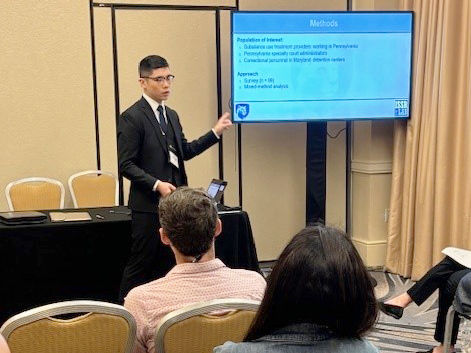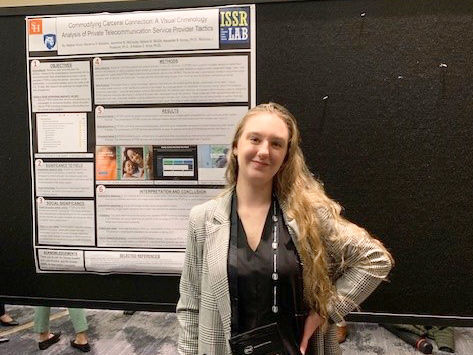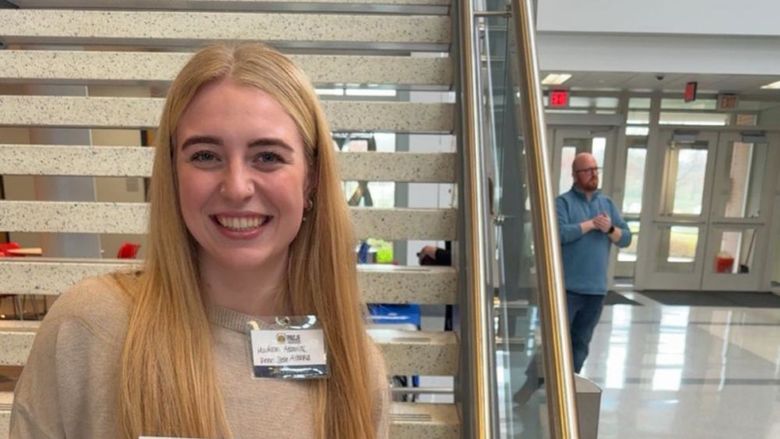
Nine Penn State Altoona nursing students were recently inducted into Sigma Theta Tau International Honor Society.
ALTOONA, Pa. — Two criminal justice students attended the American Society of Criminology’s annual conference held Nov. 15-18 in Philadelphia.
Ziwei Lin presented “Provider-Based Stigma: A Primary Barrier to Addressing the Opioid Epidemic?” as part of a thematic panel on stigma in the criminal justice system organized by researchers from Penn State and the University of Maryland. Lin’s collaborative research project used data collected from treatment professionals working in Pennsylvania and Maryland to show a relationship between stigma of opioid use disorder, perceptions of medication treatment, and the availability of treatment used for opioid use disorder.
“I really enjoyed this conference,” says Lin. “I met a lot of different professors and learned about some unique projects from researchers around the globe. The Integrated Social Science Research Lab (ISSR) that I’m a part of at Penn State Altoona prepared me for my presentation, and it was received well.”
Jazzmine McCauley also attended the conference and presented findings from a research collaboration between Penn State Altoona and Sam Houston State University through the ISSR Lab. Her poster presentation was titled “Commodifying Carceral Connections: A Visual Criminology Analysis of Private Telecommunication Service Provider Tactics.” In her study, McCauley and her student research partners investigated tactics that private telecommunication service providers use to sell their services to correctional facilities, the incarcerated, and their loved ones. Students found that many of these companies use exploitative business and marketing strategies and that many of these practices perpetuate racial-based and gender-based inequities in the system.
McCauley noted that the conference was a great opportunity for her to reconnect and network with national and international professors. “I also enjoyed attending the various panel presentations because I was able to learn more about issues currently impacting the criminal justice system.”
“They both did a great job,” says Assistant Professor of Criminal Justice and co-director of the ISSR Lab Nathan Kruis, who attended the conference with the students and served as an adviser for both projects. “They represented our department and Penn State Altoona well. I had a number of colleagues comment on their research aptitude – they couldn’t believe they were undergraduate students. The quality of work they produce is truly at the graduate level.”
In addition to attending workshops, panels, and presenting their own scholarly research, Lin and McCauley spent time exploring Philadelphia and learning about the rich history of criminal justice in the city, including visiting Eastern State Penitentiary, one of the oldest and most infamous prisons in the United States.
“My advice to all students is to get involved and to take advantage of the learning opportunities provided by your professors and Penn State Altoona,” said Lin. “This is what college is all about.”







